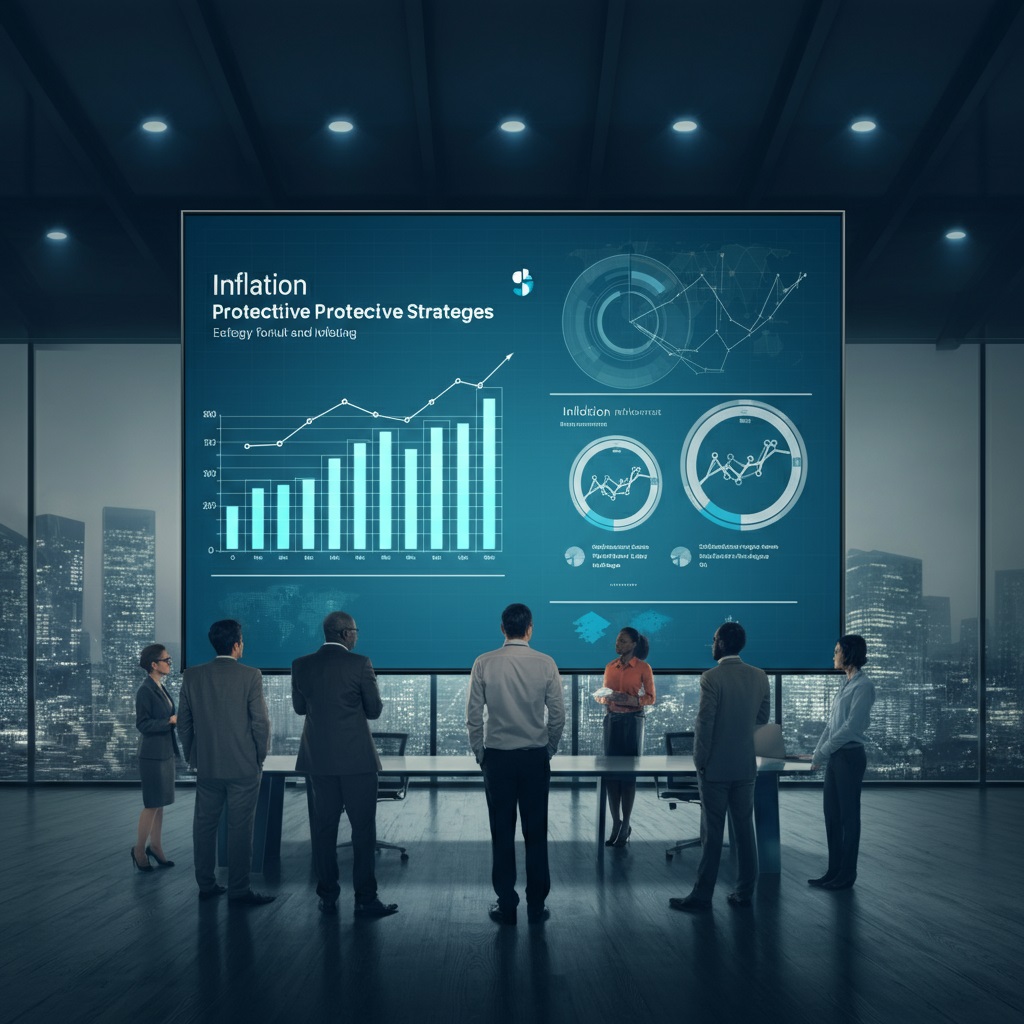Inflation is a term we’ve all heard, but its actual meaning and implications can sometimes feel elusive. If you’ve noticed that your coffee costs more than it did last year or that the same amount of groceries now demands a higher bill, you’ve experienced inflation firsthand. For business owners, entrepreneurs, and economic analysts, inflation isn’t just about rising prices—it’s a critical factor influencing buying power, investments, and overall economic strategy.
This blog will demystify inflation, explore its causes, and, most importantly, provide actionable tips to protect your hard-earned savings in an inflationary economy.
What Is Inflation?
At its core, inflation reflects the rise in prices over time, leading to a decrease in purchasing power. Put simply, as inflation goes up, your dollar buys less than it did before. While a little inflation is considered normal and even healthy for a growing economy, excessive inflation can wreak havoc on businesses and individuals alike.
Types of Inflation
- Demand-Pull Inflation
Demand-pull inflation occurs when the demand for goods and services surpasses supply. For example, if consumers eagerly buy up homes, but there aren’t enough to go around, construction material prices rise, increasing the overall cost of housing.
- Cost-Push Inflation
Cost-push inflation takes place when production costs rise, prompting businesses to charge higher prices to maintain profitability. Factors like higher fuel prices or wages can trigger this type of inflation.
- Built-In Inflation
Often referred to as wage-price inflation, this occurs when employees expect higher wages to keep up with living costs, prompting businesses to increase prices in response. This creates a self-sustaining cycle that can escalate quickly.
Measuring Inflation
Economists track inflation through metrics like the Consumer Price Index (CPI), which measures changes in the average prices of essential goods and services over time. Another measure, the Producer Price Index (PPI), assesses price changes from the perspective of manufacturers. Together, they provide a comprehensive view of inflation’s impact on both consumers and businesses.
Why Inflation Matters for Business Owners and Entrepreneurs
Inflation doesn’t just impact your daily expenses; it has a ripple effect that can alter the landscape of entire industries. Here’s why understanding inflation is critical for business owners and entrepreneurs:
Rising Costs
Inflation pushes up the costs of raw materials, labor, and even logistics. If these costs aren’t managed effectively, profit margins shrink, and businesses may struggle to remain competitive.
Pricing Decisions
To maintain profitability, businesses often need to adjust their prices during inflationary periods. However, setting prices too high risks alienating customers. Striking the right balance is essential.
Customer Behavior
Inflation influences consumer spending habits. During high inflation, buyers might focus on essentials, reducing discretionary spending on non-essential goods and services. Understanding these behavioral shifts can help businesses adapt more effectively.
How to Protect Your Savings from Inflation
Inflation doesn’t just eat away at business profitability—it also diminishes the value of personal savings. Here’s how you can combat its effects and safeguard your wealth.
1. Diversify Your Investments
One of the best ways to protect your savings is through diversification. Instead of placing all your money in cash or a savings account, consider exploring a mix of the following options:
- Stocks typically perform well against inflation because companies can adjust prices to match rising costs.
- Real Estate is often a hedge against inflation as property values and rents tend to increase alongside inflation.
- Commodities like gold, silver, and oil hold their value during inflationary periods, making them a smart addition to your portfolio.
2. Shift to High-Yield Savings Accounts
Standard savings accounts often offer low interest rates that fail to beat inflation. Consider transferring your funds to a high-yield savings account or a money market account that offers better returns.
3. Invest in Treasury Inflation-Protected Securities (TIPS)
Issued by the U.S. government, TIPS are bonds designed to keep pace with inflation. Their value adjusts according to changes in the CPI, ensuring your principal maintains its purchasing power over time.
4. Prioritize Essential Purchases
During periods of high inflation, focus your spending on essential items to minimize its impact on your personal finances. Buying in bulk or locking in fixed rates for recurring bills can help reduce your expenses.
5. Review and Adjust Your Budget
Keep your budget fluid. Periodically review all your expenses to identify areas where you can cut back. Consider pausing luxury spending or memberships that don’t bring significant value to your daily life.
6. Build an Emergency Fund
An emergency fund is your safety net during uncertain times. Aim to accumulate 3-6 months’ worth of living expenses in a liquid and accessible account, ensuring you can weather financial storms without taking on debt.
Read More👉 Financial Biohacking: Strategies for a Wealthier Future
Inflation’s Role in Shaping the Future
Inflation isn’t just a challenge—it’s an opportunity for businesses and individuals to rethink strategies, improve financial literacy, and become more resilient. By staying informed about inflation trends, businesses can adapt their pricing, procurement, and operations. Similarly, individuals who diversify their investments and actively manage their finances can protect and grow their savings.
Understanding and preparing for inflation ensures you’re not just reacting to economic changes but strategically navigating them. Interested in learning more? Building a solid financial foundation starts with staying informed.

